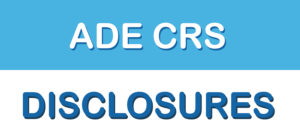529 Plans: The big questions answered
For National College Savings Month in September, we discuss several burning issues about these popular college savings vehicles.
Assets in 529 college savings plans more than doubled in ten years, topping $370 billion at the end of 2019 according to the Federal Reserve. Interest in 529 plans has grown as students and parents fret over rising tuition costs and increasing student debt loads. These accounts offer many advantages for saving for higher education expenses, but it’s also important to know the rules about how they work.
What’s the difference between the two types of 529s? A 529 plan can either be a savings program or a pre-paid tuition
program. In a pre-paid tuition program, contributors purchase future tuition units at current prices, which can be used at a later date at eligible state colleges or universities. With savings programs, there’s more leeway in how the account owner chooses to invest contributions so they may potentially grow over time.
The one big difference between the two 529 programs is savings accounts can be used for room and board expenses, while pre-paid tuition programs only cover tuition costs. Besides that, choosing either program depends on the financial needs of the family and the student.
What the most I can contribute? There is no annual limit to how much you can contribute to a 529 plan, but the overall
maximum contribution limit is $500,000. That doesn’t mean the account stops at that amount; earnings on all contributions can grow to boost the value of the account over $500,000.
What are the tax benefits? The principal tax benefits are for the 529 beneficiary—earnings on investments inside a 529 account grow tax deferred, and withdrawals are tax-free when used for tuition and other higher education expenses. If withdrawals are used for non-qualified purposes, expect to pay taxes and a penalty on the earnings portion of the withdrawals. If you’re funding a 529 plan for a future collegian, contributions you make to the account are not tax deductible on your federal income tax return, but could be deducted from your state income taxes depending on where you live.
Will a 529 plan account affect financial aid? Money in a 529 account is deemed to belong to the account owner, not the beneficiary. In many cases, this could benefit the student’s financial aid application. If a parent owns the 529 account, 5.6 percent of the 529 account value will count toward the Expected Family Contribution (EFC) amount. With other types of accounts that are owned by the prospective student, 20 percent of the account value counts toward the EFC.
The potential need for financial aid shouldn’t deter parents, students or other interested parties from saving through 529 plans. Because most need-based financial aid comes in the form of loans, any savings that the student can tap to cover higher education costs will reduce the amount of debt they have to assume.
Prior to investing in a 529 Plan investors should consider whether the investor’s or designated beneficiary’s home state offers any state tax or other state benefits such as financial aid, scholarship funds, and protections from creditors that are only available for investments in such state’s qualified tuition program. Withdrawals used for qualified expenses are federally tax free. Tax treatment at the state level may vary. Please consult with your tax advisor before investing.
Thanks for checking out the blog.
Gregory Armstrong , CFP®
This material is for general information only and is not intended to provide specific advice or recommendations for any
individual. There is no assurance that the views or strategies discussed are suitable for all investors or will yield positive
outcomes. Investing involves risks including possible loss of principal.
This material was prepared by LPL Financial. Securities and advisory services offered through LPL Financial (LPL), a registered investment advisor and
broker-dealer (member FINRA/SIPC).
Insurance products are offered through LPL or its licensed affiliates. To the extent you are receiving investment advice from a separately registered independent investment advisor that is not an LPL Financial affiliate, please note LPL Financial makes no representation with respect to such entity.
Securities and insurance offered through LPL or its affiliates are: 









